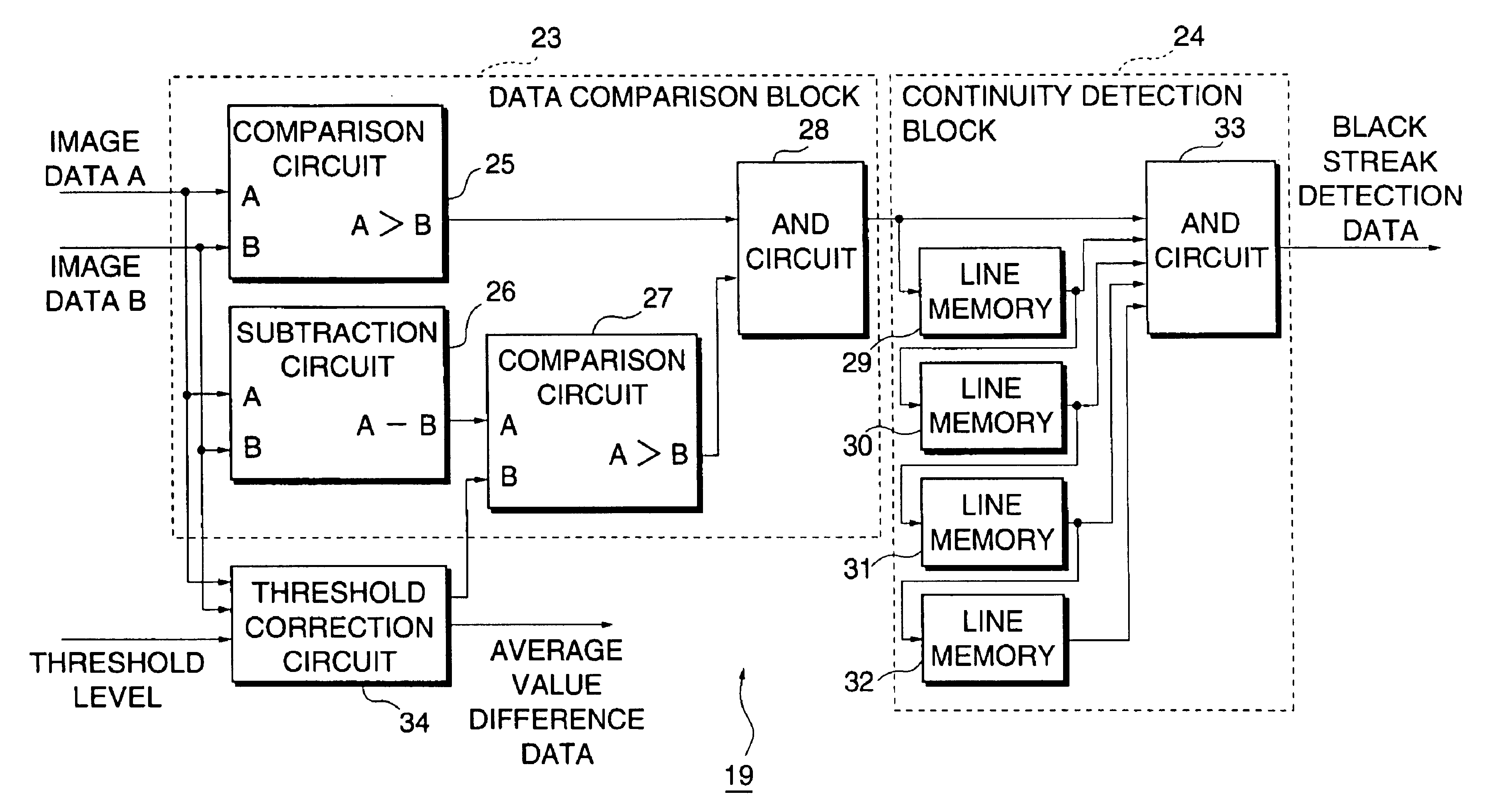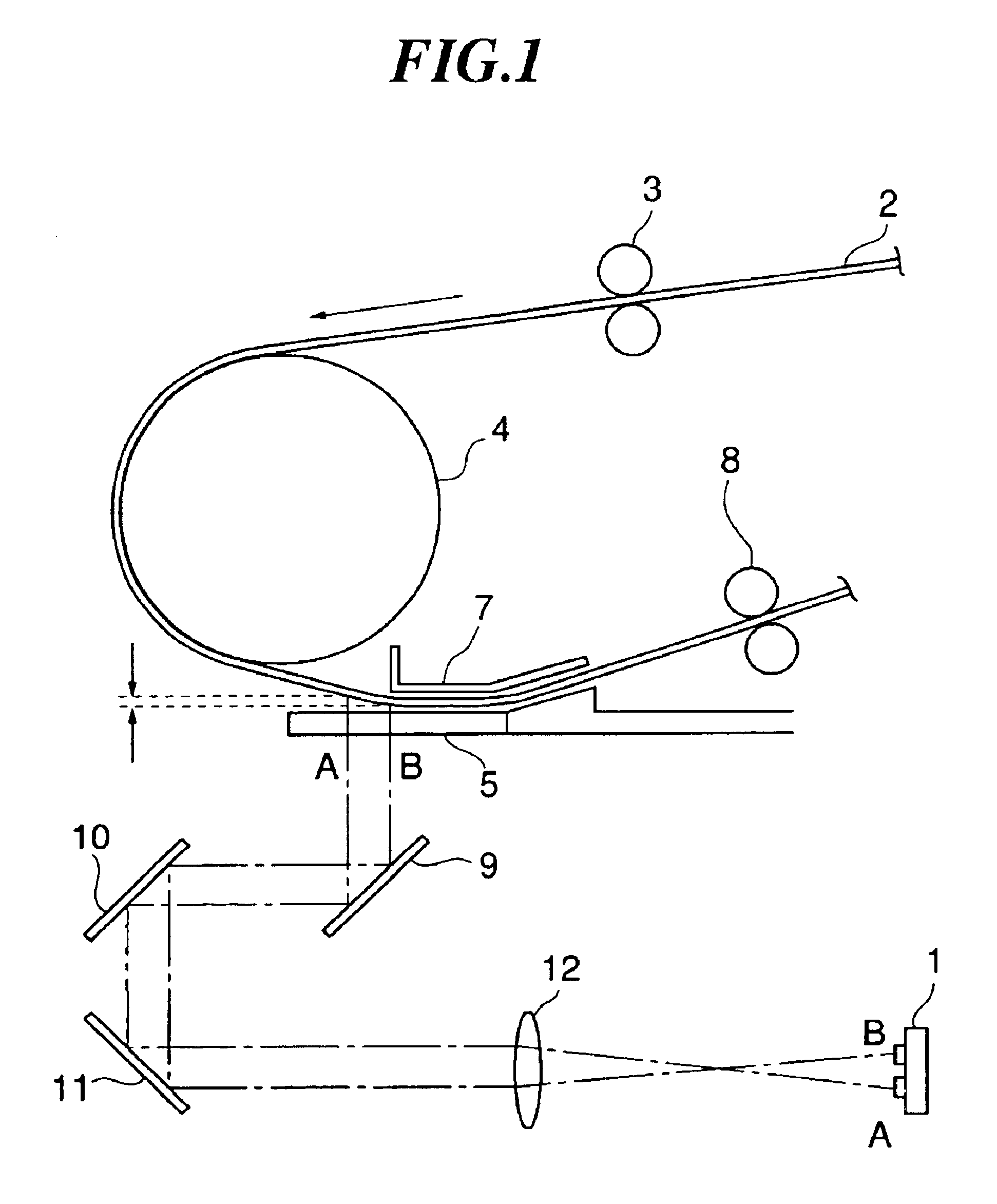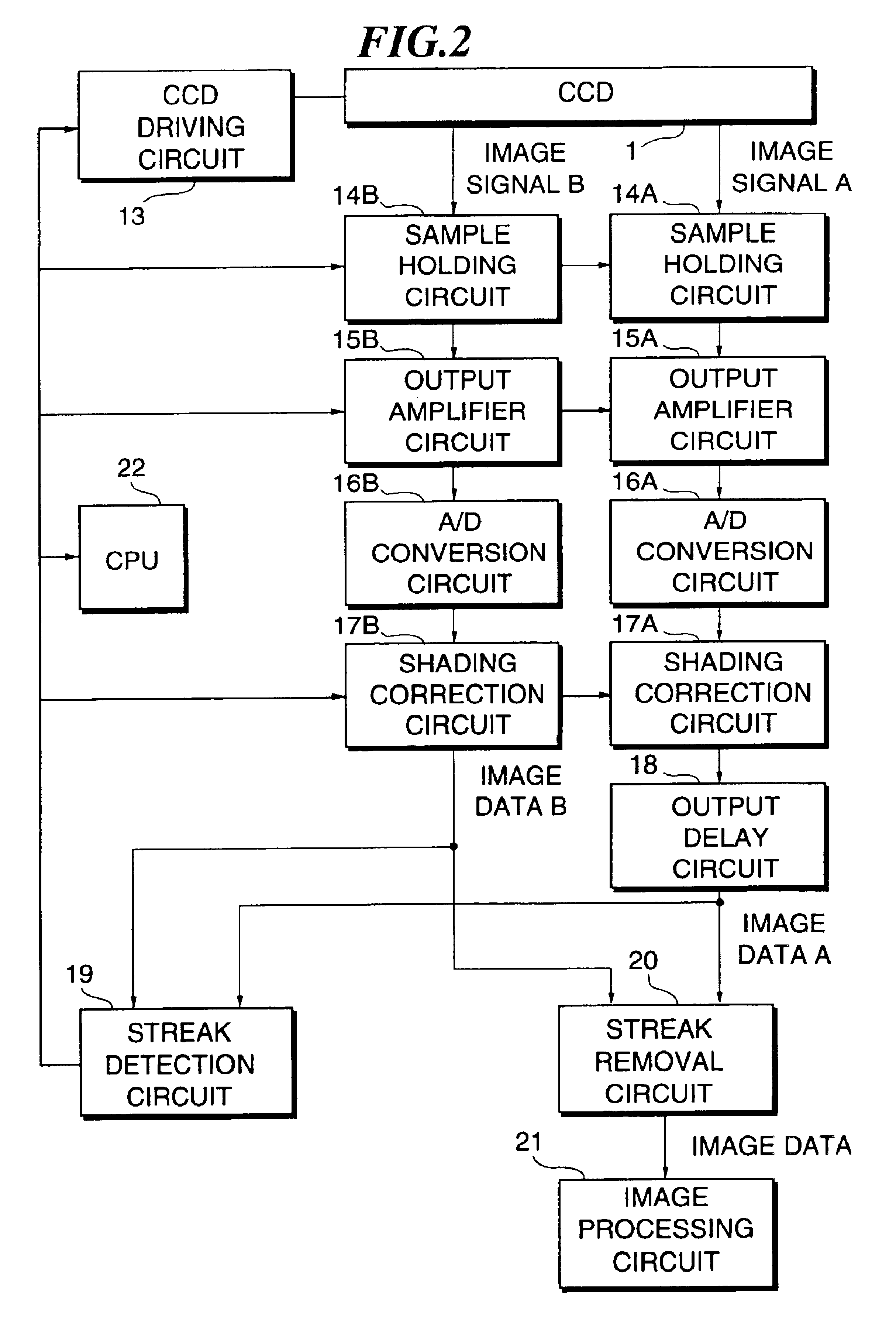Image reader and image reading method
a technology of image reader and image, applied in the field of image readers, can solve the problems of method failure, streaks due to dust particle adhesion on the output image, and inability to determine the adhesion of dust particles, etc., and achieve the effect of accurate detection
- Summary
- Abstract
- Description
- Claims
- Application Information
AI Technical Summary
Benefits of technology
Problems solved by technology
Method used
Image
Examples
first embodiment
A. First Embodiment
FIG. 1 is a block diagram showing a configuration of an image reader according to a first embodiment of the present invention. In FIG. 1, a reference numeral CCD 1 designates a part for reading an original to be conveyed by an original conveying system shown in FIG. 1. In the present embodiment, this CCD 1 is driven through a driving signal from a CCD driving circuit 13, whereby an original image is read in each of an upstream-side reading position and a downstream-side reading position on a conveying path of the original to output an analog image signal A in the upstream-side reading position and an analog image signal B in the downstream-side reading position.
The configuration of the original conveying system and the configuration of the optical system between each reading position and CCD 1 on the original conveying path are as already described referring to FIG. 1.
On a package for the CCD 1, two rows of line sensors, in each of which N pieces of 7 μm×7 μm phot...
second embodiment
B. Second Embodiment
FIG. 8 is a block diagram showing the configuration of an image reader according to a second embodiment of the present invention. In this embodiment, the streak detection circuit 19 and the streak removal circuit 20 are replaced with a streak detection circuit 119 and a streak removal circuit 120 respectively, and a density correction circuit 118 is added. In other respects, the configuration of the present embodiment is quite the same as that of the first embodiment.
The density correction circuit 118 is, as shown in FIG. 9, constructed of average value computing circuits 135 and 136, a subtraction circuit 137 and an addition circuit 138. To the average value computing circuits 135 and 136, there are inputted image data pieces A and B corresponding to the same image obtained in the upstream-side reading position and the downstream-side reading position. The average value computing circuit 135 determines an average value for 64 pixels on the image data A. Also, th...
PUM
 Login to View More
Login to View More Abstract
Description
Claims
Application Information
 Login to View More
Login to View More - R&D
- Intellectual Property
- Life Sciences
- Materials
- Tech Scout
- Unparalleled Data Quality
- Higher Quality Content
- 60% Fewer Hallucinations
Browse by: Latest US Patents, China's latest patents, Technical Efficacy Thesaurus, Application Domain, Technology Topic, Popular Technical Reports.
© 2025 PatSnap. All rights reserved.Legal|Privacy policy|Modern Slavery Act Transparency Statement|Sitemap|About US| Contact US: help@patsnap.com



